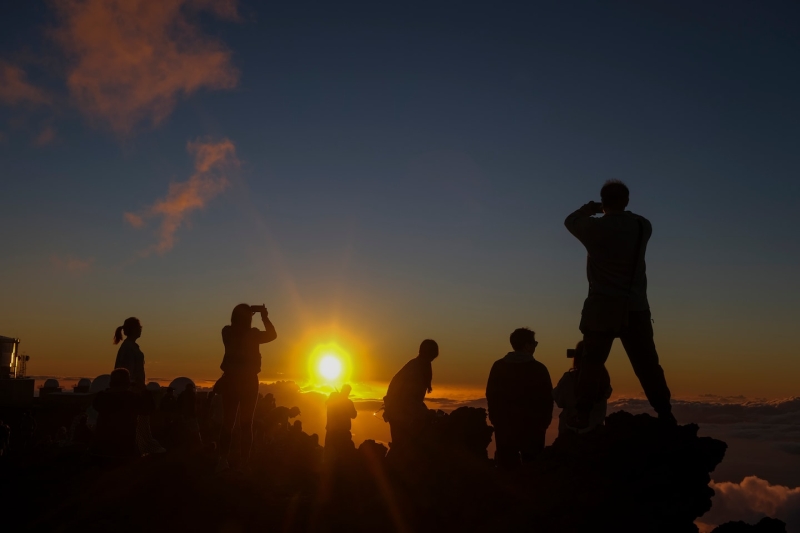Contents
To control crowds, several parks require a permit to park, hike, drive a scenic route or soak up the sunrise
With hundreds of state and national parks, we have no shortage of open space to explore the outdoors. However, during certain hours or seasons, travelers seem to congregate in a select few. To offset the harm caused by the steady march of cars and feet, these destinations have introduced reservation or timed-entry systems. A few are year-round, but several coincide with the end of our self-imposed hibernation and the start of nature’s reawakening.
“As visitation has grown, the surge in outdoor recreation has put increasing pressure on our national parks,” said Jenny Anzelmo-Sarles, a National Park Service spokeswoman. “With the reservations system, our goal is to allow the public to enjoy the parks while protecting what makes them so special.”
The deluge of visitors — 312 million recreational visits in 2022, according to the most current NPS figures — has been more of a foe than a friend to the parks. Traffic is a headache for visitors and a safety hazard for emergency vehicles. Illegal parking damages the fragile ecology. Hikers jostling for space on packed trails have turned communing with nature into a contact sport.
Skip to end of carouselEasy wins, good habits, better living.



Practical tips and smart solutions for your health, technology, travel, food, money, home and more. Elevate your daily life with expertise from The Washington Post. Find it all here.End of carousel
Reservations and related fees, which vary by park, are separate from the general admission price, which visitors must pay except on certain free days — a total of six this year, starting with Martin Luther King Jr. Day. However, the reservation requirement is waived for guests who have booked on-site accommodations, such as a campsite or cabin, or a recreational activity, such as horseback riding or a guided boat tour.
Other tips: Don’t be late for your timed entry or you could be shut out of the park. Depart when your time slot expires. Print out, download or take a screenshot of your reservation in case cellphone service is spotty. Use the resources on the National Park Service app and the “Plan Your Vacation Like a Park Ranger” tools. Before heading out, check the park’s website for weather, construction disruptions, and road and trail closures. Go to Recreation.gov for additional details and to book your spot.
Here’s where you’ll need reservations to appreciate America’s parks in all their splendor.
Haleakala National Park
To bask in the sunrise at Maui’s Haleakala National Park, whose Hawaiian name translates to “house of the sun,” visitors need to make a $1 reservation for the prime viewing hours of 3 a.m. to 7 a.m. The permit, which was introduced in 2017, provides parking in any of the four high-elevation lots: Summit, Haleakala Visitor Center, Kalahaku and Leleiwi. If you’re not an early bird, go in mid-December, when the sun starts its ascent a few minutes shy of 7 a.m.
Glacier National Park
Montana’s Glacier National Park debuted its pilot program in 2021, the second-busiest year on record, with slightly more than 3 million parkgoers. From May 24 through Sept. 8, travelers visiting between 6 a.m. and 3 p.m. need a reservation for the westside entrance of Going-to-the-Sun Road and North Fork. Starting July 1, the system expands to the eastern entrances at Many Glacier. The one-day pass costs $2 per vehicle. No reservation is required for Going-to-the-Sun Road from the east side at St. Mary and Two Medicine.
The passes will be divvied up over two booking times. Advance planners can secure a reservation about four months before their park date, starting Jan. 25 for visits on May 24, Jan. 26 for May 25 and so on. Starting May 23, the remainder will be up for grabs at 7 p.m. Mountain time for next-day entry. The 24-hour release plan allows the park to adjust access and avoid overcrowding.
If history repeats itself, prepare for a busy year. In 2023, the park administered more than 257,300 reservations, up from 180,832 in 2022 and 135,086 in 2021.
Acadia National Park
Acadia National Park in Maine has watched its numbers more than double over the past decade. In 2022, it ranked as the fifth-most-visited national park, with nearly 4 million guests. To reach the park’s highest peak, the 1,530-foot Cadillac Mountain, visitors must obtain a $6 timed-entry pass for Cadillac Summit Road from May 22 through Oct. 27.
The park will release 30 percent of Cadillac Summit Road sunrise and daytime reservations 90 days in advance and 70 percent two days before a planned arrival date. Sunrise passes are valid for seven days; daytime reservations are good for one day. Sunrise starts at 4 a.m. to 6 a.m., depending on the month; daytime passes begin at 6 a.m. in the spring and 8 a.m. in the fall.
Zion National Park
Zion National Park in Utah is bringing back its quarterly lottery. The winners — roughly 200,000 annually — earn the right to hike Angels Landing, a vertiginous trail that can take upward of five hours.
The first lottery opened Jan. 1 and closes Jan. 20, covering hikes from March through May. The next one will be held from April 1-20 for treks in June through August, followed by July 1-20 for September through November, and finally Oct. 1-20 for Dec. 1 through Feb. 29, 2025.
If you strike out with the seasonal lottery, try the day-before lottery. Both cost $6 for the application (valid for up to six people) and $3 per person for the permit.
To improve your chances, the park recommends choosing less busy times, such as weekdays instead of holidays and weekends.
Shenandoah National Park
For D.C.-area residents, hiking Old Rag Mountain in Shenandoah National Park is a rite of passage. Over the years, the Saddle, Ridge and Ridge Access trails have become as snarled with traffic as Interstate 66. To reduce congestion, the Virginia park instituted a day-use permit system in 2022.
From March 1 through Nov. 30, it will issue 800 tickets a day, split evenly between 30 days in advance and five days ahead of a visit. The permit costs $1.
Rocky Mountain National Park
If you visited Rocky Mountain National Park in Colorado last year, you might remember the drill.
The park has two types of one-day passes, both of which start on May 24. One covers the Bear Lake Road Corridor and the rest of the park from 5 a.m. to 6 p.m., through Oct. 20. The other grants access to the whole park with the exception of the corridor from 9 a.m. to 2 p.m., through Oct. 15. Visitors have a two-hour window to enter the park.
Reservations will become available on the first day of each month for visits planned for the following month, plus any unclaimed openings in the booking month. For example, on May 1, travelers can purchase passes for May 24 through June 30. The final release will take place Sept. 1.
The park said September and October weekends can draw significant crowds and reminds guests to “pack your patience.”
Muir Woods National Monument
At Muir Woods National Monument, north of San Francisco, only car travelers and shuttle bus passengers need a reservation. The parking fee for a regular-size vehicle is $9.50; the shuttle costs $3.75 per person, age 16 or older. Half of the spaces are released up to 90 days in advance; the other half go up three days beforehand.
Arches National Park
Arches National Park in Utah, which has experienced a boom in visitations, is employing its permit system for the third year. The timed-entry arrangement allows about 2,700 vehicles per day, equal to a busy day in 2019.
Visitors will need a pass from 7 a.m. to 4 p.m., April through October. Tickets, which have a one-hour window, will become available on the first day of the month for entry three months later. (April reservations open in January.) The park released the first block of dates on Jan. 2 and will conclude the process on July 1.
In addition, a limited number of tickets will be offered one day in advance. The park expects the passes to sell out quickly.
Yosemite National Park
Yosemite National Park had required permits for three years but jettisoned the plan last summer. After interminable lines at entrances and grueling gridlock, they’re back. (Read a local’s guide to the park here.)
During select times from February through October, travelers will need a reservation to drive into or through the park, home of the legendary El Capitan. The first set of dates starts Feb. 10 and coincides with the glowing phenomena at Horsetail Fall. On February weekends and Washington’s Birthday (observed Feb. 19), reservations are required 24 hours a day.
After a short break, the Peak Hours Plus reservation system returns on weekends and holidays from April 13 through June 30 and daily July 1 through Aug. 16. It reverts to weekends and holidays from Aug. 17 through Oct. 27. The prime times are from 5 a.m. to 4 p.m. No pass is required outside of these periods.
Passes became available on Jan. 5 for visits from April 13 through Oct. 27. You can also secure a reservation seven days before your arrival. The permit is valid for three consecutive days.
Great Smoky Mountains National Park
The country’s most-visited national park — nearly 13 million people swung by in 2022 — does not charge an entrance fee. But if you want to stop the car for longer than 15 minutes, you’ll need a parking tag.
Visitors must purchase a $5 daily, $10 weekly or $40 annual permit to park anywhere within its North Carolina or Tennessee boundaries. Pick one up at a participating visitor or welcome center; automated kiosk in select parking lots, overlooks and campgrounds; or online.
The Park It Forward program, which launched last March, does not guarantee a spot, so you might still have to circle the lot at such popular spots as Laurel Falls Trail and Clingmans Dome.

